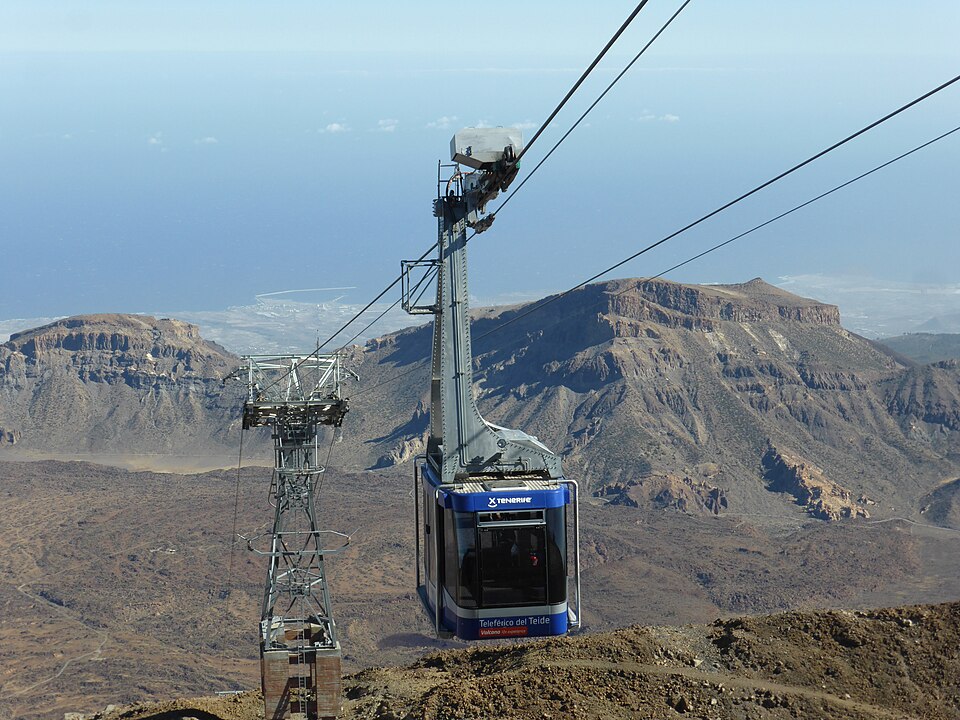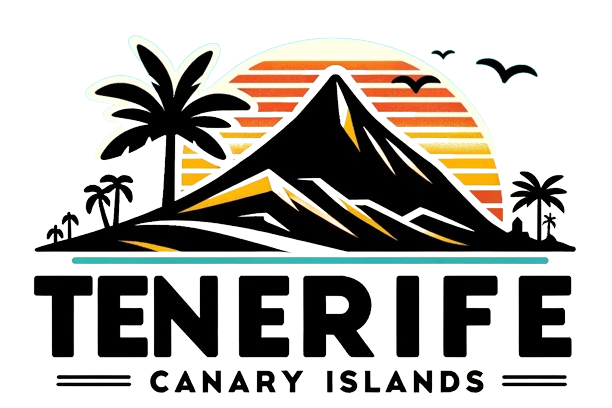The Teleférico del Teide, Spain’s highest cable car, whisks adventurers from the lunar-like base of Mount Teide at 2,356 meters to the ethereal La Rambleta station at 3,555 meters in just eight minutes—offering a front-row seat to Tenerife’s volcanic majesty. Nestled within the UNESCO World Heritage-listed Teide National Park, this engineering marvel not only conquers altitude but unlocks a playground of hikes, legends, and stargazing under some of the world’s clearest skies. As 2025 brings updates like potential Starlink connectivity at high-altitude refuges and enhanced sustainable tours, it’s the ultimate gateway to the Canary Islands’ rooftop. Whether you’re chasing summit permits or sunset silhouettes, this guide equips you with history, practicalities, and pro tips for an unforgettable ascent.
Engineering a Dream: The History and Construction of Teleférico del Teide
The seeds of the Teleférico del Teide were sown in 1929 when visionary lawyer Andrés de Arroyo González de Chávez, inspired by Germany’s Zugspitze cable cars, dreamed of a similar feat on Mount Teide. He funded initial studies, leading civil engineer José Ochoa Benjumea to draft plans in 1930 after scouting Swiss, Austrian, and German sites. Decades of negotiations followed—overcoming land disputes and bureaucratic hurdles—until the Sociedad Teleférico al Pico Teide formed on October 15, 1959, securing a land swap with La Orotava Town Hall for a school and plots in Aguamansa.

Inaugurated on July 18, 1971, and opening to the public in August, the 1,200-meter span features two 44-passenger cabins gliding over a dramatic 750-meter vertical rise. Operated by Teleférico del Pico del Teide—a public-private entity with La Orotava holding 49.44% shares—it has transported millions, evolving into the Volcano Teide Experience brand in 2013 for eco-focused adventures. Concession runs until 2037, with 45 staff ensuring seamless ops amid Teide’s active geology.
Fun fact: The cable car traverses a landscape so otherworldly, NASA trains Mars rovers here—proving Teide’s terrain rivals extraterrestrial frontiers.
The Thrilling Ascent: What to Expect on Your Teleférico del Teide Ride
Board at the lower station on TF-21 (Km 40.2), a sleek hub with free parking for 500 cars, a cafeteria, and the “Science and Legend” exhibit—free with tickets—blending Guanche myths of volcano deity Guayota with the 1,000-year-old Chinyero eruption science. As cabins ascend, watch pockmarked craters, obsidian flows, and endemic Tajinaste plants unfold below, culminating in a 360° panorama from La Rambleta: glimpses of La Gomera, El Hierro, La Palma, and Gran Canaria on clear days.
The upper station’s compact foyer offers Wi-Fi, restrooms, and Spain’s highest payphone—no café, so pack layers for temps dipping to 0°C even in summer. One-hour stays are standard, but guided add-ons extend exploration. In 2025, operations paused briefly for weather (e.g., October 26 closure till 11:30 a.m.), underscoring Teide’s unpredictable microclimate.
Practicalities: Tickets, Hours, and Getting to Teleférico del Teide in 2025
Open daily 9 a.m. to 5 p.m. (last ascent 4 p.m., descent 4:50 p.m.), extending to 6 p.m. July–October pre-clock change. Tickets: €43.50 adults round-trip (kids €29.50, under-3 free); ascent-only €25 (essential for hikers). Book online via volcanoteide.com for timed slots—queues swell in peak season; refunds for closures, but weather’s fickle.
Reach via TF-21 from La Orotava (north) or Vilaflor (south)—1-hour drive from Santa Cruz. TITSA buses: Line 348 (Puerto de la Cruz) or 342 (Playa de las Américas) drop nearby. For eco-ease, opt for Teide Tour shuttles from hotels (€65+ including guide).
| Ticket Type | Adult Price | Child Price (3-12) | Notes |
|---|---|---|---|
| Round-Trip | €43.50 | €29.50 | Includes exhibit; timed slots |
| Ascent Only | €25 | €20 | For hikers with descent permit |
| Sunset Special | €60+ | €40+ | Guided, transport add-ons available |
Beyond the Ride: Hikes, Sunsets, and Stargazing from La Rambleta
From La Rambleta, trails beckon: Easy 30-minute loops to Fortaleza (north views of Anaga) or Pico Viejo (south caldera panorama with “Teide’s Nostrils” craters). Summit seekers tackle Telesforo Bravo (Route 10) to 3,718m crater—free permit via reservasparquesnacionales.es, book 30+ days ahead (high demand). Guided hikes (€95+) include permits and expertise.
Sunset rides (€60+, small groups) cast Teide’s pyramid shadow over the sea; pair with Stars & Sunset for telescopes under Bortle Class 1 skies—one of three global hotspots with Chile and Hawaii. In 2025, Teleférico eyes managing Altavista Refuge (3,200m) with Starlink internet, enhancing overnight astro-adventures (reopening summer 2025).
Safety First: Health, Weather, and Pro Tips for Your Teide Ascent
High altitude demands prep: Banned for pregnant folks, under-3s, and heart patients due to pressure/oxygen drops—consult docs for others. Closed-toe, grippy shoes mandatory—no heels, sandals, or flats. Layer for -5°C to 20°C swings; UV intensifies 40% higher—slather SPF50+.
Tips: Arrive early (pre-10 a.m.) for crowds and clear skies; download Teide Legend audio guide (€5) for myths en route. Weather apps essential—strong winds/visibility halt ops (e.g., 2025 closures). Hydrate, avoid alcohol; for hikes, pack water, snacks, and walking poles. Eco-note: Stick to paths to protect endemics like the elusive Teide violet.
The Teleférico del Teide isn’t just transport—it’s a launchpad to Tenerife’s soul, where ancient lava meets infinite stars. Ascend, explore, and descend transformed by the island’s wild pulse.
Map of the Teleférico del Teide
Map-generator
